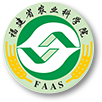Abstract:
SSR was applied to determine the authenticity of 15 tea cultivars at a farm for preserving premium tea plants. The leaves from 3 to 4 individual plants of each cultivar were randomly collected for the test to compare with those from the respective standard varieties preserved at the China National Germplasm Tea Repository in Hangzhou. Twenty SSR markers were selected for the analysis and comparison. It was found that Longjing 43, Anjibaicha, and Yingshuang teas, as well as a few Gelecha, Jinfeng, and Pingyang Tezao plants, were genetically identical with the reference standards, and 6 cultivars of Zaofengchun, Biyun, Zhuzichun, Wuniuzao, Shuigucha, and Fuding Dabaicha deviated from the standards, while the identifications for Yinpian, Jiukengzhong, and Zisun could not be determined. The deviations suggested possible errors in cultivar collection, mislabeling, and/or mutation occurred during cultivation of the cultivars at the farm. The results provided the basic information for a full and accurate utilization of the collected germplasms in the repository farm. They also indicated that the genotypes and cluster diagram obtained from the SSR method could adequately be used to preliminarily identify the clonal tea cultivars. For the sexual variety, however, further study is required.




 下载:
下载: